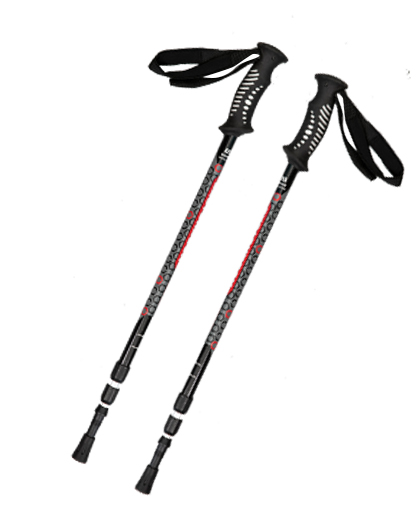

When buying a pair of cross country skis, you'll first need to decide if you want to go with a pair of full suspension or a pair of soft-sided poles. The difference between the two is the degree of flexibility. A full suspension ski will have a stiffer flex point, which means it will bend more easily and will give you a better turn.
With the softer cross country skis used for cross country skiing, the poles are utilized to help in increased forward momentum. This means, with the right size cross country poles, you'll be able to get the best turn possible. Since every style of cross-country skiing also has a slightly dissimilar technique, the suggested length for cross country poles differs depending on what style of skiing you'll be performing.
A novice skier should start with a pair of less flexible poles. These are ideal for those who have little experience and are good for getting their feet accustomed to the unique feeling of sliding across the surface. Once you feel more comfortable using the cross country poles, you can upgrade to the more flexible poles. With advanced cross country skiers, however, it's often best to go with the full suspension system. This will allow you to focus on power without having to worry about stiff limbs or getting hung up. This will allow you to accelerate and maintain your speed for longer stretches of the course.
Another benefit to full suspension cross country skis is the increased stability that they offer. With loose skis on your feet, there is increased potential for slipping and sliding. This is much more common for beginners, since many don't have a lot of upper body strength to begin with. By using the more rigid and durable full suspension poles, you increase your ability to control your body and move with grace. Many skiers who don't do much speed skating find that they have significantly less pain once they have added them to their arsenal of cross country poles.
If you're an experienced skier, you already know that it's important to get the right kind of edge for your style of skiing. For this reason, you shouldn't choose poles based on age or gender. While it's rare to see a female skier wearing men's equipment, you'll find that men's poles tend to be heavier, which creates more control and traction. For women, speed skates tend to work better with flexible poles, as they will be more apt to roll faster on them. It's important to get your feet accustomed to the difference between the various cross country pole lengths before you buy your equipment, so that you can choose the right size.
Many people choose not to use poles at all when they're doing downhill skiing, and that's because they don't want to spend extra money on something they're not sure they'll like. But most skiers quickly discover that the benefits of poles far outweigh the negative points. The better grip, control and traction offered by heavier duty poles mean that you can go downhill much easier than if you use lighter weight skis. You also prevent you from getting stuck in the turns on longer skis, and you can make your turns much smoother and more consistent when you choose heavier duty poles. In short, choosing the best cross country ski poles is a personal choice, but one that will greatly improve your performance.
